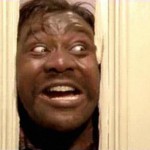Basil Fawlty Earns a "D" in the Science of Great Comedy
This post was archived from the original website for Fawlty Towers Revisited, which premiered on public television in 2005.
In 2000, the British Film Institute selected Fawlty Towers as the best British television show. After a year-long poll looking for Britain’s Best Sitcom, the BBC announced this year that Fawlty Towers ranked as the fifth best sitcom of all time by British viewers. A huge feat considering there were only 12 episodes.
Among foreign viewers — even some Germans — Fawlty Towers topped the list as the top British sitcom of all time.
Even Fawlty Towers, the hotel itself, was voted #1 in a poll Hotels.com conducted to determine the all-time most memorable screen hotels. It
outdistanced other such “hotels from hell” as the Bates Motel from Psycho and The Overlook Hotel, which provided a winter home for Jack Nicholson and family in The Shining.
Such polls are a measure of the enduring popularity of a show, but how does one measure what makes a great comedy, great?
Well, you’ve heard it before….and probably said it. Sitcoms are too formulaic. But, have you ever taken the time to actually consider what the perfect formula is for a classic comedy? What makes some sitcom fail to make the grade and never get past the first season, while others are timeless treasures that make us laugh year after year? Is there actually a science to all the laughter? Dr. Helen Pilcher, a British molecular neurobiologist by day and stand-up comic by night, set out to answer all of the above in a study commissioned by UKTV Gold, the satellite channel in the United Kingdom known as the home for classic British comedy. Pilcher and her team of research scientists analyzed almost two decades’ worth of British comedies and actually came up with a mathematical expression for success, and failure. It’s quite simple. A sitcom is a success if it scores high marks when applied to the following formula.
[((R x D + V) x F)+ S]/A
Where’s the simple part, your asking? Pilcher explains:
“Comedic value is determined by multiplying the recognizability of the main
character (R) by their delusions of grandeur (D). This is added
to the verbal wit of the script (V), and the total is multiplied by the
amount someone falls over or suffers a physical injury (F). The
difference in social status between the highest- and lowest- ranking
characters (S) is added. Finally, the total is divided by the
success of any scheme or stratagem in the show (A). Each term in the
formula is assigned a value up to a maximum of 10 to give an overall
scientific score.”
See how simple it is?
To actually put this formula into play, Dr. Pilcher established a baseline
which, hopefully, no comedy would score lower than. One BBC show
from 2001, Orrible, came dreadfully close to achieving the lowest score among those tested. By the way, the bottom score was a meager 6.5.
After lengthy research, the long-running Only Fools and Horses was voted No. 1 with a score of 696. At No. 2, a relative newcomer to the British comedy scene, The Office finished with a 678 score.
Not to be outdone after 30 years of making people lauch in more than
than 60 countries, everyone’s favorite irascible hotelier, Basil
Fawlty, and Fawlty Towers came in at No. 3. Another perennial favorite amongst British sitcom fans, Black Adder, came in a No. 4.
So next time you sit down and watch a new entry into the sitcom lineup, try thinking of
[((R x D + V) x F)+ S]/A and be your very own network television Head of Light Entertainment and give it a thumbs up or down.
And when you’re watching Fawlty Towers Revisited, with its more than 40 minutes of the funniest clips from the two seasons of Fawlty Towers, make note of just how much “D” Basil has and his perceived “S.” And marvel at all of the “F” and “V”!
In: Archive






